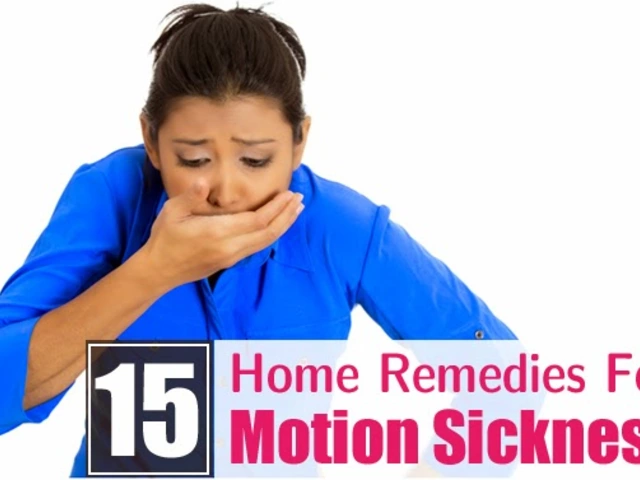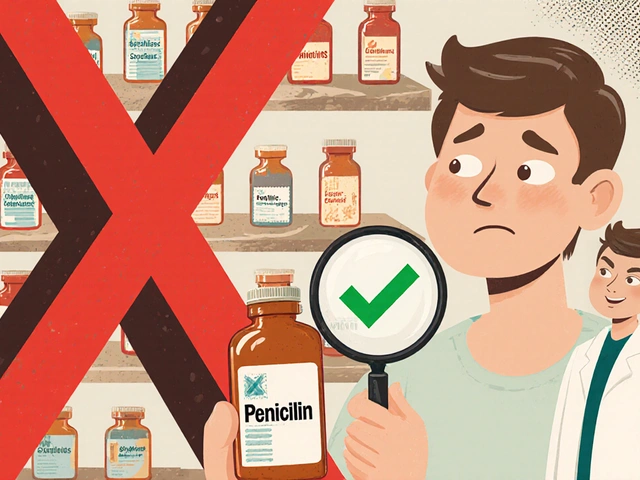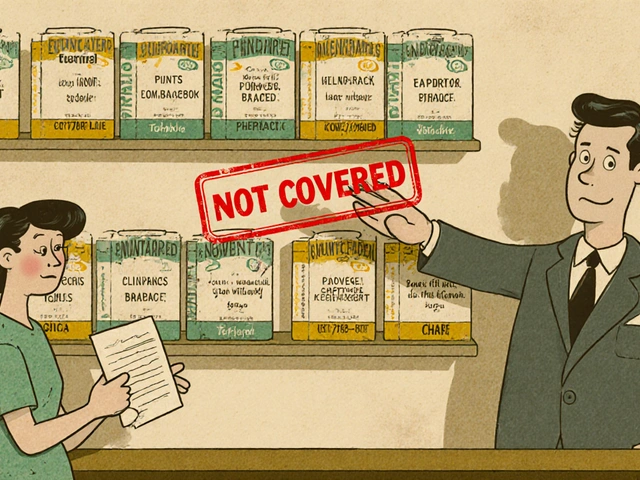How Local Anesthesia Boosts Dental Treatment Success
Local Anesthesia Duration Estimator
This tool estimates the expected duration of local anesthesia based on the type of anesthetic used and patient factors.
Anesthetic Type
Patient Factors
Ever wondered why a simple tooth extraction can feel painless for some patients and uncomfortable for others? The secret often lies in how well local anesthesia works during the procedure. When the right anesthetic is chosen and administered correctly, it can turn a dreaded dental visit into a smooth, stress‑free experience and improve the odds of a successful outcome.
Key Takeaways
- Effective local anesthesia reduces pain, anxiety, and procedural interruptions.
- Choosing the right anesthetic (e.g., lidocaine vs. articaine) matters for onset speed and duration.
- Patient factors such as inflammation, anxiety, and medication use influence anesthetic success.
- Understanding common failure signs helps dentists act quickly.
- Patients can follow simple tips to maximize comfort and safety.
What Is Local Anesthesia in Dentistry?
Local anesthesia is a medication that temporarily blocks nerve signals in a specific area of the mouth, preventing pain during dental work. Unlike general anesthesia, it keeps you fully conscious, allowing you to talk and cooperate with the dentist.
In dental practice, local anesthesia is delivered via injections into the gum tissue, the jawbone, or around specific nerves. The most common techniques are the infiltration (directly into the site) and the nerve block (targeting larger nerve trunks).
Why Local Anesthesia Impacts Dental Treatment Success
Successful dental procedures hinge on three core elements: pain control, patient cooperation, and procedural efficiency. When Dental treatment proceeds without pain, the patient stays still, the dentist can work faster, and the risk of complications drops dramatically.
Research from the American Dental Association shows that adequate anesthesia lowers the incidence of post‑operative complications by up to 30%. Patients who experience minimal pain report higher satisfaction scores and are more likely to return for routine check‑ups, which in turn improves long‑term oral health outcomes.
Common Types of Dental Local Anesthetics
Two of the most frequently used agents are lidocaine and articaine. Both belong to the amide family, but they differ in potency, onset, and duration.
| Attribute | Lidocaine | Articaine |
|---|---|---|
| Onset (minutes) | 2‑4 | 1‑3 |
| Duration (minutes) | 60‑120 | 75‑180 |
| Potency (relative to lidocaine) | 1.0 | 1.5‑1.7 |
| Maximum single‑dose (mg/kg) | 7 | 7 |
| Typical concentration | 2% | 4% |
While lidocaine is the workhorse for most routine fillings, articaine’s faster onset and longer duration make it a favorite for longer procedures like extractions or root canals.

Factors That Influence Anesthetic Effectiveness
Even the best drug can fall short if certain variables aren’t considered.
- Injection technique: A precise Nerve block places the anesthetic close to the targeted nerve, ensuring a more complete numbness.
- Inflammation: Inflamed tissue lowers pH, which can reduce the drug’s ability to cross nerve membranes, leading to partial numbness.
- Patient anxiety: High Dental anxiety triggers adrenaline release, which can counteract the anesthetic’s effects.
- Medications: Certain antidepressants, antihistamines, or beta‑blockers can interfere with anesthetic metabolism.
- Age and body weight: Dosing must be adjusted for children, elderly patients, or those with low body mass.
Understanding these factors helps the dentist select the right drug, adjust the dosage, and anticipate any complications before they arise.
Managing Anesthetic Failure and Side Effects
When a patient reports lingering pain during a procedure, it’s often labeled as Anesthetic failure. Common causes include missed nerve target, inadequate dosage, or the inflammatory environment mentioned earlier.
Dentists typically respond by:
- Re‑injecting a supplemental dose in a different site.
- Switching to a more potent agent (e.g., from lidocaine to articaine).
- Using adjunctive methods such as topical anesthetic gels or intrapulpal injections for extreme cases.
Side effects are generally mild but worth noting. The most frequent are temporary numbness of the lip or tongue, a metallic taste, or brief swelling at the injection site. Rarely, patients may experience allergic reactions, which is why dentists always confirm allergy history before injection.
Patient Tips for a Smooth Anesthetic Experience
- Tell your dentist about any medications, especially blood thinners or antidepressants.
- Practice deep‑breathing or guided imagery to lower anxiety before the injection.
- Eat a light meal if you’re scheduled for a lengthy procedure; an empty stomach can increase pain sensitivity.
- Avoid smoking or drinking alcohol 24hours prior, as both can affect blood flow to the gums.
- If you notice prolonged numbness after the appointment, gently massage the area and avoid chewing until feeling returns.
When to Talk to Your Dentist About Anesthesia Concerns
Open communication is key. Reach out if you experience any of the following:
- Unusual swelling or bruising around the injection site.
- Persistent numbness lasting more than 6hours for infiltration or 12hours for nerve block.
- Sharp, shooting pain that emerges during a procedure despite the injection.
- Allergic symptoms such as rash, itching, or difficulty breathing.
Addressing these signals early lets the dentist adjust the plan, ensuring safety and comfort for future visits.
Frequently Asked Questions
How long does local anesthesia usually last?
Typical duration ranges from 60 to 180 minutes, depending on the drug used, the dosage, and the area anesthetized. Articaine often lasts longer than lidocaine.
Can I be allergic to lidocaine or articaine?
True allergies to amide anesthetics like lidocaine are rare. Most reported reactions are side effects such as tingling or taste changes. Your dentist will screen for any known allergies before injection.
Why does my lip feel numb for hours after a filling?
Numbness is normal because the anesthetic spreads to nearby soft tissues. It usually fades as the drug is metabolized. Gentle massage and staying hydrated can help speed the process.
What can I do if I still feel pain during a procedure?
Speak up immediately. The dentist can give a supplementary injection, switch to a stronger anesthetic, or use a different technique to achieve full numbness.
Does dental anxiety affect how well the anesthesia works?
Yes. High anxiety releases adrenaline, which can counteract the anesthetic’s effect and make it wear off faster. Managing anxiety with relaxation techniques can improve outcomes.







16 Comments
Kayla Charles
September 29, 2025 at 19:50
Local anesthesia is truly the unsung hero of modern dentistry, and understanding its nuances can make a huge difference in patient comfort.
When you think about it, the right choice between lidocaine and articaine isn’t just about potency, it’s also about onset speed and how long the numbness will last.
For example, a patient who needs a quick fill might benefit from lidocaine’s reliable onset, while a lengthy root canal could be a perfect match for articaine’s longer duration.
Age plays a subtle role as well; children metabolize drugs faster, so dosage adjustments are crucial to avoid under‑numbing.
Elderly patients often have reduced circulation, which can prolong the anesthetic effect, sometimes leading to prolonged numbness if not monitored.
Inflammation is another hidden factor – the acidic environment around an inflamed tooth can diminish the anesthetic’s ability to penetrate nerve membranes, leading to partial failure.
High anxiety, on the other hand, triggers adrenaline release that can counteract the numbing effect, meaning a calm patient often experiences better anesthesia.
Medication interactions are a silent player too; certain antidepressants or beta‑blockers can alter drug metabolism and affect how long the numbness lasts.
Dental practitioners have a toolbox of techniques: from standard infiltration to strategic nerve blocks, each with its own benefits and challenges.
When an anesthetic fails, the dentist might re‑inject in a different site, switch to a stronger agent, or even use adjunctive methods like topical gels.
Side effects are usually minor – a metallic taste, temporary lip numbness, or a small bruise at the injection site are common and typically resolve on their own.
Rarely, true allergic reactions occur, which is why a thorough allergy history is mandatory before any injection.
Patients can also play a proactive role: informing the dentist about all medications, practicing relaxation techniques, and avoiding nicotine or alcohol before the appointment can improve outcomes.
If prolonged numbness or unexpected pain occurs, it’s essential to contact the dentist promptly to rule out complications.
Overall, the synergy between proper drug selection, technique, and patient preparation creates a smoother, less painful dental experience, ultimately leading to higher satisfaction and better oral health.
Paul Hill II
October 3, 2025 at 07:10
Good point, thanks for the thorough overview!
Stephanie Colony
October 6, 2025 at 18:30
Honestly, most people just need a decent dose and stop over‑thinking the chemistry.
It’s baffling how many self‑appointed experts claim they know better than trained professionals.
Abigail Lynch
October 10, 2025 at 05:50
Okay, so picture this: you’re sitting in the dentist chair, heart pounding, and suddenly the drill starts buzzing while you still feel a tingle in your lip.
The drama of it all feels like a low‑budget horror movie, and you start wondering if the anesthetic was just a myth.
Inflammation, anxiety, and that weird taste of metal combine into a perfect storm of discomfort.
It’s enough to make anyone question the whole process and start a conspiracy about dentists hoarding secret analgesics.
David McClone
October 13, 2025 at 17:10
Sure, let’s all pretend that an injection automatically guarantees eternal bliss – what a fairy tale.
Jessica Romero
October 17, 2025 at 04:30
From a clinical standpoint, it’s essential to consider the pharmacokinetic profiles of lidocaine versus articaine.
Lidocaine, with its 2% concentration, provides a reliable onset of approximately 2‑4 minutes and a duration that can extend up to two hours depending on tissue perfusion.
Articaine, on the other hand, boasts a higher lipid solubility due to the additional thiophene ring, facilitating faster membrane penetration and a longer analgesic window, sometimes exceeding three hours in optimal conditions.
When dealing with inflamed pulpal tissue, the lowered pH environment can impede the non‑ionized fraction of the anesthetic, thereby reducing its efficacy; this is where adjunctive strategies like buffering the solution or employing a secondary infiltration become clinically relevant.
Moreover, patient-specific variables such as systemic medications-particularly certain SSRIs or beta‑blockers-can modulate hepatic metabolism pathways, subtly altering drug clearance rates.
Thus, a comprehensive pre‑operative assessment, encompassing medical history, anxiety level, and tissue status, is paramount to optimize anesthetic success and mitigate adverse outcomes.
Michele Radford
October 20, 2025 at 15:50
It’s frankly irresponsible to gloss over the ethical implications of inadequate pain control.
Patients trust dental professionals with their wellbeing, and any negligence in dosing or technique borders on malpractice.
We must hold practitioners accountable for ensuring that anesthesia is administered correctly, especially when vulnerable populations like children or the elderly are involved.
Mangal DUTT Sharma
October 24, 2025 at 03:10
Hey everyone 😊, just wanted to add that staying hydrated and eating a light snack before a long procedure can actually help the anesthetic work better.
Also, try some deep‑breathing exercises – it really calms the nerves and can reduce that adrenaline surge that messes with the numbing effect.
And don’t forget to tell your dentist about any meds you’re on; that info is gold for tailoring the dose!
Gracee Taylor
October 27, 2025 at 13:30
I think it’s great that the article emphasizes communication – letting the dentist know about meds, anxiety, and even dietary habits makes a big difference.
When patients and providers collaborate, the whole anesthesia process becomes smoother and less stressful for everyone.
Jonathan Alvarenga
October 31, 2025 at 00:50
Look, the science is clear: if you don’t adjust the anesthetic protocol for an inflamed tooth, you’re courting failure.
The acidic environment neutralizes the drug, leading to partial numbness, which in turn forces the dentist to pause and re‑inject – a clear waste of time and resources.
It’s astonishing how many practitioners still rely on a one‑size‑fits‑all approach, ignoring patient‑specific variables like age, anxiety, and medication interactions.
This lazy mindset not only compromises patient comfort but also inflates procedural costs and extends chair time.
In the end, the lack of individualized care reflects poorly on the profession and undermines trust.
Jim McDermott
November 3, 2025 at 12:10
I think the article does a good job but i m not sure about some of the stats they quoted.
Also, the infomation about articaine vs lidocaine could be more clear - maybe a quick table would help?
Naomi Ho
November 6, 2025 at 23:30
This is really helpful a lot of practical tips for patients and dentists alike the advice on medication disclosure and managing anxiety is spot on
Christopher Stanford
November 10, 2025 at 10:50
Honestly the article is overhyped the whole thing about anesthetic failure is just a normal part of dentistry no need to freak out about it.
Steve Ellis
November 13, 2025 at 22:10
Exactly, Naomi! Your point about staying hydrated is something we should all remember – great reminder for future visits.
Harold Godínez
November 17, 2025 at 09:30
Nice overview, really clear and straight‑to‑the‑point. Thanks for breaking it down.
Sunil Kamle
November 20, 2025 at 20:50
While the article is informative, one must acknowledge that the over‑reliance on pharmacologic solutions may inadvertently diminish the emphasis on holistic patient preparation, a subtle yet consequential oversight.